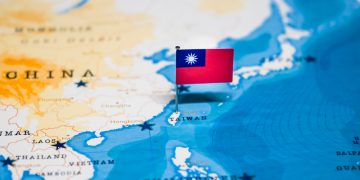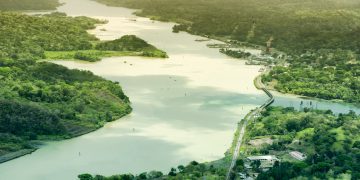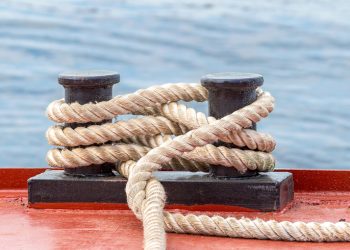Ignorance is Bliss: EEDI and Heavy Weather
Background
For any given ship and technology, EEDI is a restriction on installed power. Concern about the impact of this restriction on the heavy weather performance of the fleet has led to the insertion of the following sentence into the draft regulation.
For each ship to which this regulation applies, the installed propulsion power shall not be less than the propulsion power needed to maintain the manoeuvrability of the ship under adverse conditions as defined in the guidelines to be developed by the organization.
This vague sentence raises a number of obvious questions including:
1. What do we mean be manoeuverability?
2. What are adverse conditions?
3. What happens if the power requirement mandated by this sentence is larger than the maximum allowable installed power under EEDI?
Recently, IACS et al have taken a very preliminary stab at (1) and (2).(cit.1)With respect to (2), IACS argues for either Beaufort 9 which has an mean return period of about a week in the North Atlantic, or Beaufort 10 with a mean return period of about a month. They define manoeuvrability as the ability to turn into the wind from any heading, and then maintain a positive advance speed.
But IACS immediately drops the turning requirement assuming that, if the ship can maintain a positive advance speed in head seas, it will be able to make the turn and then maintain course. IACS claims that implementing the turning requirement – some time in the future – will require further research.
MEPC 62/5/19 is vague on what the advance speed should be, but in an accompanying document, MEPC 62/INFxx, the same authors write “Results from interviews with expe-rienced masters showed that they reduce speed up [sic] to a minimum to avoid damagesto the hull and cargo. This minimum speed for adverse conditions has been stated to be between 4 knots, which is considered to be the minimum needed to ensure manoeuvrability,and up to 8 knots for a large container vessels.(cit.2)”Indeed it is the author’s experience thatthe minimum steerage way speed in calm water for a large tanker is at least 4 knots.
MEPC 61/INFxx concludes with a calculation of the advance speed of a standard VLCC in BF10 head seas. They find that this full-powered ship can barely make 3 knots at which point it is torque limited. No calculations were done to ensure that the ship could maintain course at that speed.
In a separate submission, the International Chamber of Shipping largely supports the IACS position, but argues that to be safe we need an explicit requirement for a minimum trial (calm water) speed.(cit.3) “Based on experience”, ICS suggests a minimum speed of 14 knots loaded and 14.5 knots ballast, which is not much lower then current practice for bulk carriers and smaller tankers.
CTX Commentary
CTX agrees with IACS et al, that for the purposes of this regulation “adverse conditions” should be defined to be at least BF9 (SS8). Any ship worthy of the name should be able to handle conditions which on major trade routes she can expect to encounter once a week.And using BF10 as the criterion with a North Atlantic return period of about a month would certainly not be overly conservative.
IACS’s suggested criteria for manoeuvrability is not unreasonable, but minimal. IACS only requires the ship to be able to turn into the weather and then maintain a positive speed into the weather. If this is all we are going to require, than it certainly argues for the BF10 weather condition. CTX comes down on the side of BF10(SS9).
IACS’s inexplicable assumption that, if the ship has the power to generate a positive advance speed, then it will be able to turn and then maintain course is both flat wrong and unnecessary. Tools are available to compute or at least estimate whether or not a ship can turn and then maintain course, and this should be part of the analysis.(cit.4)
For most ships, meeting the turning requirement is much tougher then maintaining positive speed in head seas. In 2003, we commissioned SSPA to do a full set of polar diagrams for our VPlus class using the Seaman software.
The VPlus is an extremely powerful (36,000kW), extremely large (440,000 ton) ULCC. SSPA found that at full power and BF10, the ship could turn into the wind from any initial heading and then maintain 7 knots into the weather. But when power was reduced to 85% RPM, about 60% the VPlus’s MCR, the ship
could no longer turn into the wind in BF10, even though if she could have done so, she could have maintained 4 knots. When power was reduced to 80% RPM, about 50% power, she could not turn into the wind in BF9. We can be confident that the VPlus’s heavy weather capabilities are superior to just about any commercial ship in existence.
If we are not going to compute manoeuvrability directly, then we must be conservative on the required advance speed, which in this case would point to a required speed of at least 5 knots, preferably more. But in its sample analysis of a standard, non-EEDI compliant VLCC, IACS had to lower the required speed to 3 knots, and even then the ship just barely squeeks under the engine’s torque limit.(cit.5) It is unlikely that this ship can maintain course at this speed and extemely unlikely that she can make the turn. What this analysis shows is what we already knew: existing, non-EEDI compliant ships have very marginal heavy weather performance. Any reduction in power is a dangerous.
This example is also strong support for the ICS position of a required calm water speed of at least 14 knots. But then we have another problem. CTX estimates that in order to meet Phase 3 EEDI requirement, VLCC designers will have to reduce power to the point where the ship will have a loaded calm water speed of 12.4 knots.(cit.6) The difference in installed power between these two speeds is about 5000 kW. There will be no legal VLCC’s.(cit.7)EEDI will have outlawed by far the most efficient means of moving oil.(cit.8)
The fundamental problem here is we are enacting draconian regulation with little or no understanding of its consequences. With respect to heavy weather performance of EEDI compliant tankers, a single flawed analysis of a single, non-EEDI compliant ship is all we have. This is preposterous.
Citations
1) IACS et al, Minimum propulsion power to ensure safe manoeuvring in adverse conditions, MEPC
62/5/19, 2011-05-06.
2) IACS et al, Minimum propulsion power to ensure safe manoeuvring in adverse conditions, MEPC 62/INFxx, 2011-05-6.
3) ICS, Minimum propulsion power to ensure safe manoeuvring in adverse conditions, MEPC 62/xx,2011-05-dd.
4) In the real world, it is the turning ability – or lack thereof – that causes casualties. See Aegean Sea,Iron Baron, Pasha Bulker, and Ocean Victory. Go to CTX Casualty Database and search on the ship name.
5) Using towing tank (calm water) propeller performance in this situation is optimistic. We are modelling only the effect of the increase in the angle of attack and not all the other problems which vessel motion and a seaway impose on the prop, including all sorts of additional cavitation.
6) The Impact of EEDI on VLCC Design and CO2 Emissions.
7) Thanks to EEDI’s absurd bias in favor of smaller tankers and bulk carriers – see EEDI Absurdities,with a bit of cheating, we might be able to create a legal 100,000 tonner. Replacing one VLCC with three Aframaxes will increase CO2 emissions by at least 35%.
8) Kruger has identified a number of situations where EEDI conflicts with existing safety requirements.For example, he studied an EEDI compliant version of the Northern Expedition, an efficient 21 knot RoPax operating in the Prince Rupert Strait. Canadian rules reasonably require twin screw and the ability to return to port at 6 knots in Beaufort 8 on a single screw. Kruger finds that an EEDI-compliant version of this ship must have an installed power of less that 3400 kW per shaft. But the return to port requirement mandates
between 5100 and 8700 kW per shaft depending on the specification of the wave pattern associated with BF8.
Jack Denavvey


































































